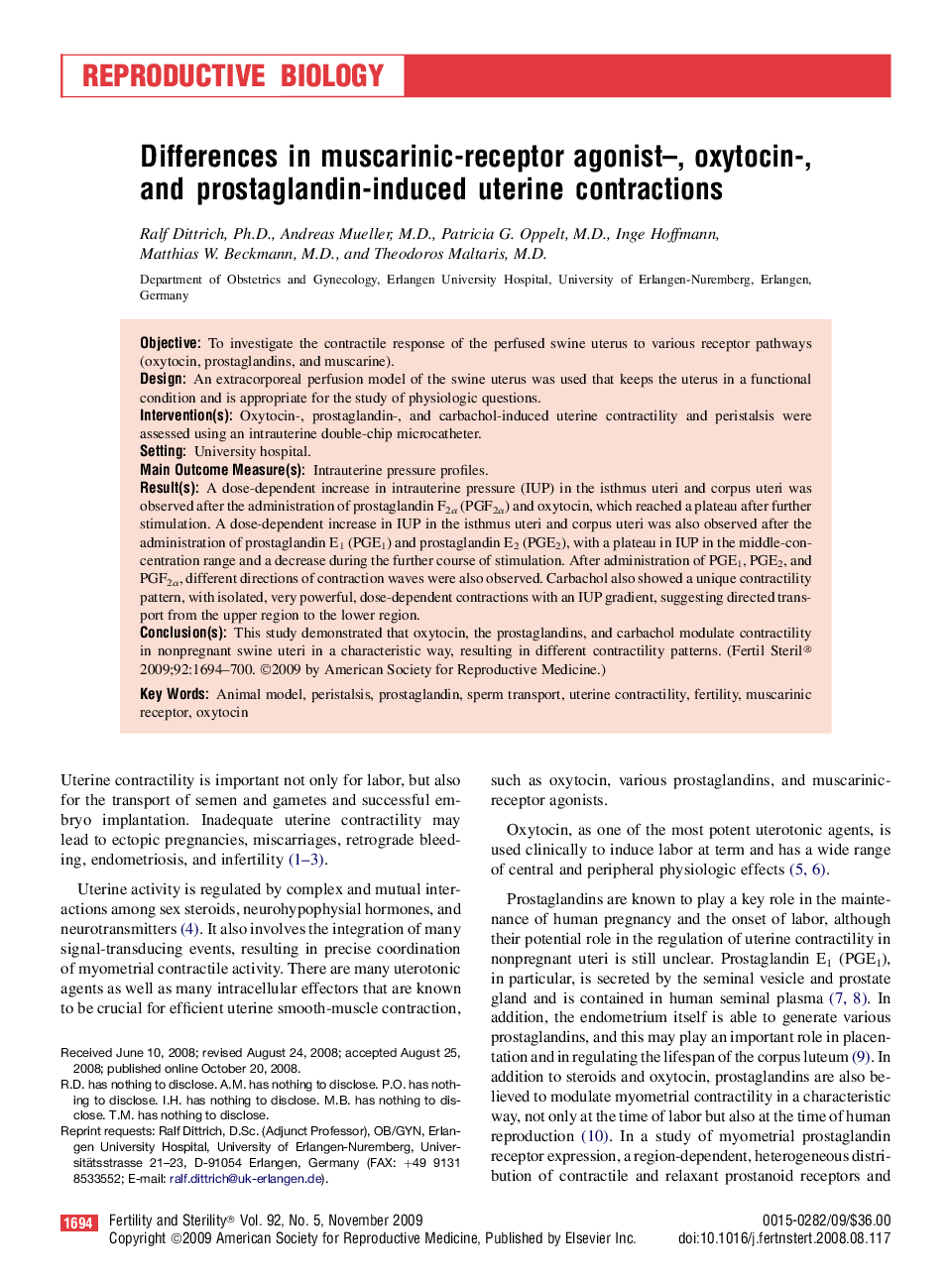| Article ID | Journal | Published Year | Pages | File Type |
|---|---|---|---|---|
| 3941077 | Fertility and Sterility | 2009 | 7 Pages |
ObjectiveTo investigate the contractile response of the perfused swine uterus to various receptor pathways (oxytocin, prostaglandins, and muscarine).DesignAn extracorporeal perfusion model of the swine uterus was used that keeps the uterus in a functional condition and is appropriate for the study of physiologic questions.Intervention(s)Oxytocin-, prostaglandin-, and carbachol-induced uterine contractility and peristalsis were assessed using an intrauterine double-chip microcatheter.SettingUniversity hospital.Main Outcome Measure(s)Intrauterine pressure profiles.Result(s)A dose-dependent increase in intrauterine pressure (IUP) in the isthmus uteri and corpus uteri was observed after the administration of prostaglandin F2α (PGF2α) and oxytocin, which reached a plateau after further stimulation. A dose-dependent increase in IUP in the isthmus uteri and corpus uteri was also observed after the administration of prostaglandin E1 (PGE1) and prostaglandin E2 (PGE2), with a plateau in IUP in the middle-concentration range and a decrease during the further course of stimulation. After administration of PGE1, PGE2, and PGF2α, different directions of contraction waves were also observed. Carbachol also showed a unique contractility pattern, with isolated, very powerful, dose-dependent contractions with an IUP gradient, suggesting directed transport from the upper region to the lower region.Conclusion(s)This study demonstrated that oxytocin, the prostaglandins, and carbachol modulate contractility in nonpregnant swine uteri in a characteristic way, resulting in different contractility patterns.
